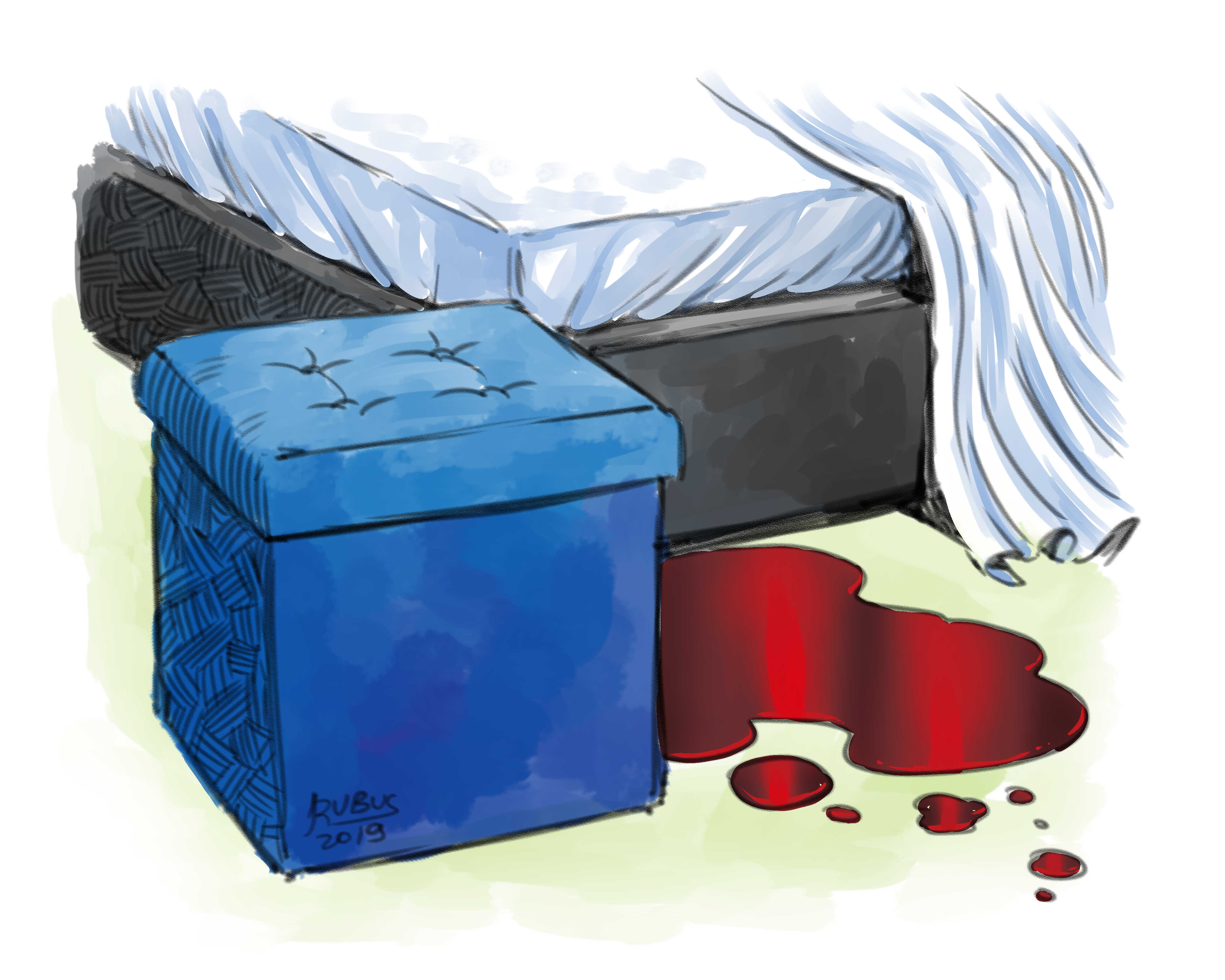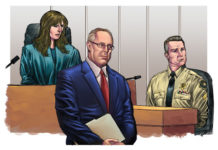Think about the least significant piece of furniture in your home: a stool, a hamper, maybe a couch pillow. For me, it’s a cheap Ikea chair, one that’s currently occupied by an uneven stack of mismatched magazines that I mean to read but probably never will. These nomadic elements of home décor are inconsequential to our everyday lives — until they aren’t. Do you remember exactly where your furniture was on July 16, 2018?
Donniesha Gregory is the victim in this case, a 32-year-old mother of two. On Monday, July 16, Donte Solomon, Gregory’s ex-boyfriend, allegedly parked outside her house in Exposition Park and demanded that she come down to see him. When she refused, he shot her through her upstairs window. Gregory collapsed on her bedroom floor and died minutes later while Solomon fled the scene in a green Camry. At least that’s the story that Deputy District Attorney Carolyn Yeh is out to prove. She’ll do it through testimony based heavily on witness memory.
The defendant, Solomon, is here, seated next to Alternate Public Defender Lisa Kang. Solomon’s a 40-year-old man sporting a thin beard. He wears a checkered shirt with sharp starchy creases, like it’s just out of the package. His face is impassive except for when his eyes shift to his attorney. If convicted, Solomon will face 25 years to life in prison, but his countenance more resembles a man waiting at a bank to see if his loan has been approved than someone waiting to hear if they’ve received a life sentence.
One of the key witnesses for the prosecution takes the stand, a woman by the name of Mercedes Scott. Scott is about 5’4” and wears her hair in tight thin braids. Of course, the most noticeable aspect of Scott’s presentation is her mint green prison jumpsuit, the word “COUNTY” stamped in white across the front. Her reason for incarceration isn’t addressed in the courtroom, but the LA County Sheriff’s record lists her crime as a felony and her expected release as December 9 of this year. As the jury scribbles in their spiral ring notebooks, Scott fiddles with her fingers. She clears her throat and shifts her weight in her seat. She does not want to be here.
And yet, her presence is profoundly important. On the evening of July 16, Scott was in Gregory’s home hanging out with their friend, Pruno Pitts. She told officers who arrived on the scene that she saw Solomon’s car drive by the house prior to the incident. Ten minutes later, Scott was standing in the stairwell outside Gregory’s room. The door was cracked open and she overheard Solomon yelling at Gregory from the street before he fired a gun three to four times. Scott immediately went into the room and saw Gregory bleeding out on the carpet in front of her. Everything that Scott remembers about that night is critical to the case. And the court is going to make her remember every detail. It doesn’t matter that it happened nine months, four weeks, and two days ago.
Nine months ago the Mueller Report hadn’t been released, nine months ago Donald Trump had yet to withdraw the U.S. from the Iran nuclear deal, nine months ago Brett Kavanaugh was not on the Supreme Court, and nine months ago 12 boys on a junior soccer team in Thailand had yet to be trapped in a cave and subsequently rescued. Nine months ago Scott was a free woman, and nine months ago Gregory was still alive.
The attorneys start with the big questions: How did you know Donniesha? “We went to church together.” Did Donniesha know more than one Bloods gang member? “She had lots of friends.” Had you seen Mr. Solomon’s car before? “Sure. I mean it’s his car.”
It’s not these questions that take up the bulk of Scott’s time on the stand; it’s the minutiae. Kang and Yeh inquire about the specifics. Why did you look out the window? After you saw the car drive away did you sit down immediately or did you stand for a few moments? Exactly how much was the door to Donneisha’s room cracked open? Scott does not recall. Not all the small things.
Yeh shows Scott a statement to jog her memory. Kang shows Scott a statement from her investigator to jog her memory, ostensibly in a different direction. Scott’s face drops as she reads the second statement to herself on the stand. Her voice cracks “This is too much.” The phrase is not directed at anyone in the courtroom, it’s a statement of fact. But the questions keep coming. What chair did you sit in earlier that night? What about Donniesha? Where was Mr. Pitt’s chair?
Pitt’s chair isn’t even really a chair. It’s described as a blue box with a cushion on top; a space-saving, multi-use storage cube. A common household item, it’s exactly the kind of tertiary furniture that moves and moves often. It’s insignificant. This is not a chair that goes under a desk, at a kitchen table or in front of a TV. It can go anywhere and doesn’t belong anywhere either.
The prosecutor produces evidence: a photo of the room prior to the shooting. Scott indicates on the photo where she sat beside Gregory on a bench by the bed. Pitts, she explains, perched on the blue chair by the window, which is out of frame. The defense attorney produces a different photo, one I later discover was a screengrab from the first responding officer’s body cam. This screengrab portrays a different side of the bedroom. In the background, just beyond the dresser, is the bluish blur of the “chair.” It’s not by the window; it’s by the bed. Scott admits that the chair must have been by the bed and that her previous statement was incorrect. She impeaches herself on the stand.
It’s a victory for the defense — small but it could make all the difference. In this case, as in all criminal court cases, the verdict from the jury must be unanimous and the burden of proof is on the prosecutor. If any juror now mistrusts Scott’s testimony based on her mistake, it may be enough reasonable doubt for them to find Solomon not guilty. Maybe she’s misremembering or maybe she’s fabricating this entire story, maybe every word she said has been a lie. After all, she’s the one in the jumpsuit.
Yeh looks up from her notes and sees that Scott is crying. The prosecutor softens “I’m sorry. I know this is difficult.” Scott wipes away a tear. She’s not making a scene of it and doesn’t seem to want the added attention. She just shrugs her shoulders and takes a deep breath. “My memory is really not that vivid by me being traumatized.”
Think back to your insignificant piece of furniture. Could you remember exactly where it was on July 16, 2018? Now imagine that July 16, 2018 was also the day that your best friend died in front of you.






